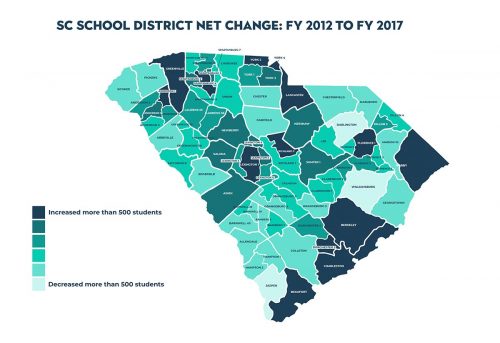Consolidating tiny school districts will save a fortune and make schools better
South Carolina has 46 counties but 82 school districts. That’s a lot. Statistically, its 1.78 school districts for every county.
To put that in perspective, North Carolina has 100 counties and 115 school districts, Florida has 67 counties and 67 school districts. Georgia has a lot of school districts—181—but they also have 159 counties! Statistically, those three states have between 1.00 and 1.15 districts for every county.
Many of South Carolina’s school districts are small, and some are shrinking. But focus on these simple facts:
- South Carolina has 7 school districts that are smaller than 1,200 students and have shrunk between 40% and 60% in the last twenty years.
- We have nearly 30 districts that have shrunk between 1% and 60% that are smaller than 3,400 students. (For comparison, Wando High has 4,000 students, Dorman High about 2,500 and Spring Valley High about 2,000. We have 30 districts in South Carolina that are the size of a single high school!)
Each of those small districts has a board and a district office and a superintendent and the staff. That kind of duplication is expensive for the state and the local taxpayer. Spending too much on administration means spending too little in the classroom. The Abbeville court decision said as much, and a study commissioned by the State Department of Education showed how $338 million could be saved over five years with consolidation and cooperation.
The issue of consolidation is a complicated one. That’s why a major study is required. Our soon-to-be-published research will describe standards for determining appropriate district size, analyze the culture of individual districts, and make recommendations on how consolidation might happen in our lifetimes.
With the legislature out of session, the future of consolidation is a moving target. But our research, coupled with at least two other efforts, can begin to get consolidation on the state agenda now.
Look for our full analysis and recommendations soon. Together, we can create greater efficiency that will bring greater opportunity for children, especially in the areas that need it most.







